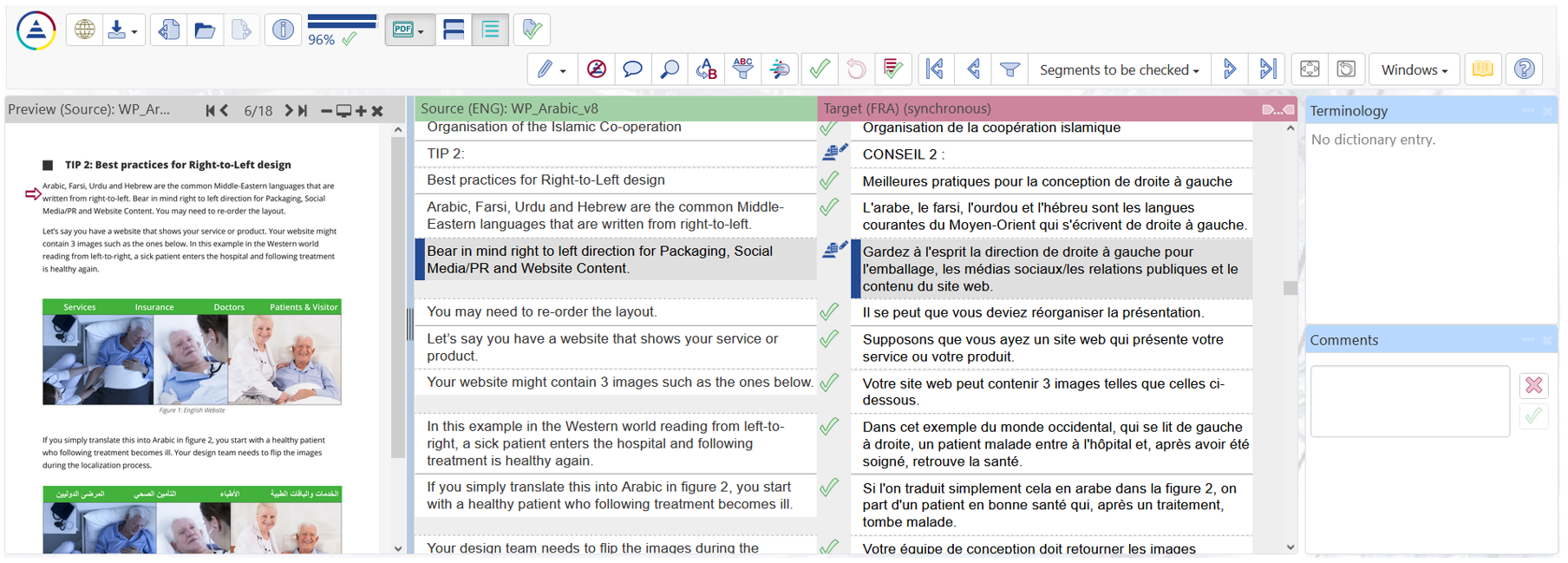Good quality translations: translators and proofreaders
Over its 35 years of experience, STAR has developed well-tested processes to deliver quality translations. Professional translation teams comprising of translators and independent reviewers will produce great translations with the following characteristics:
- the translated text is grammatically correct and has no typos or misspellings
- the translated text is an accurate translation of its source text
- the translated text reads fluently to the target audience
- the translated text serves the same purpose as the source text intended to, but in a way that convinces the target audience that the text was written originally for them
However, sometimes even though the translation quality is good, it might not always fit 100% with the customer’s preferences.
Reviews by non-language professionals
Non-language professionals or domain expert reviewers frequently use preferential terminology and preferential style that reflect the way customers and users typically communicate. They can provide reassurance that the translation reads fluently in their language, and that it uses the appropriate vocabulary and terminology for the industry. They can also ensure that the translation serves the correct purpose.
However, non-language professionals are prone to introduce grammar and spelling errors in the reviews. Also, their reviews are frequently less faithful to the original source and so can to some extent be considered more like localizations or transcreations. Being less faithful to the original source can be great from a sales and marketing perspective; however it may open up the company to unintended legal, warranty, health and safety or contractual liabilities.
Best Practices
If you decide to have your sensitive marketing and sales documentation reviewed, best practices should be followed to ensure the quality of the final publication:
- Have STAR professional translators and professional reviewers create the translations.
- Have a native domain expert review and update the translations.
- Have STAR professional translators check the grammar and spelling of the corrections, as well as checking that the reviews are still being faithful to the original text and applied consistently throughout the materials.
We recommend that reviews are conducted only when necessary, as additional time will be spent by the domain experts and additional time and costs might be incurred by the translators checking the changes.
STAR Online Review Portal – WebEdit
WebEdit is an efficient tool that will allow you to review your translations through a dedicated online review portal that helps streamline content review. This helps reduce the additional costs and time spent on review passes and allows a direct integration of the changes.
How does it work?
STAR loads the translated files online and grants you access to them. After logging into the portal, your reviewer can see the translations side by side with the source content in one integrated window and work directly on the translated files to carry out the edits necessary. The user-friendly interface makes reviewing your translated documents in WebEdit very easy and fast and the synchronized bilingual display will ensure a better accuracy of the review.
Additionally, WebEdit provides a direct interface into STAR’s working format, so once the changes are inserted by your reviewer and checked by our translation teams, the preferred translations are immediately saved and stored for reuse in your future translations. This also entirely removes the need for a time-consuming manual implementation of changes from PDFs back into the translated files and therefore keeps additional time and costs to a minimum.
WebEdit will simplify your reviewing process: it avoids the exchange of files during the review stage, tracks the changes added automatically and centralizes all the files needed for the review on a single platform. This guarantees a faster execution of the review component and of the overall projects.
Reviews in Word, PDF, Excel etc
A more traditional approach is to review your translations in the original file format or via PDFs, using track changes or commenting tools.
However, it is harder to keep track of changes with some file types. For instance, in Excel and PowerPoint, changes are not as easily identified as in Word. The process is more complex when dealing with design files (InDesign files for example), where the changes are marked on the PDF and then need to be implemented back into the InDesign files by our team.
Generally, this reviewing approach will add some additional cost and can slow down a project. This is because our team need to deal with a more complex process. We have to implement your changes, update our translation memory system and then reproduce new files for you in the various languages again.
When online review is not possible, whilst harder, this is still the best industry practice for reviewing translation.



